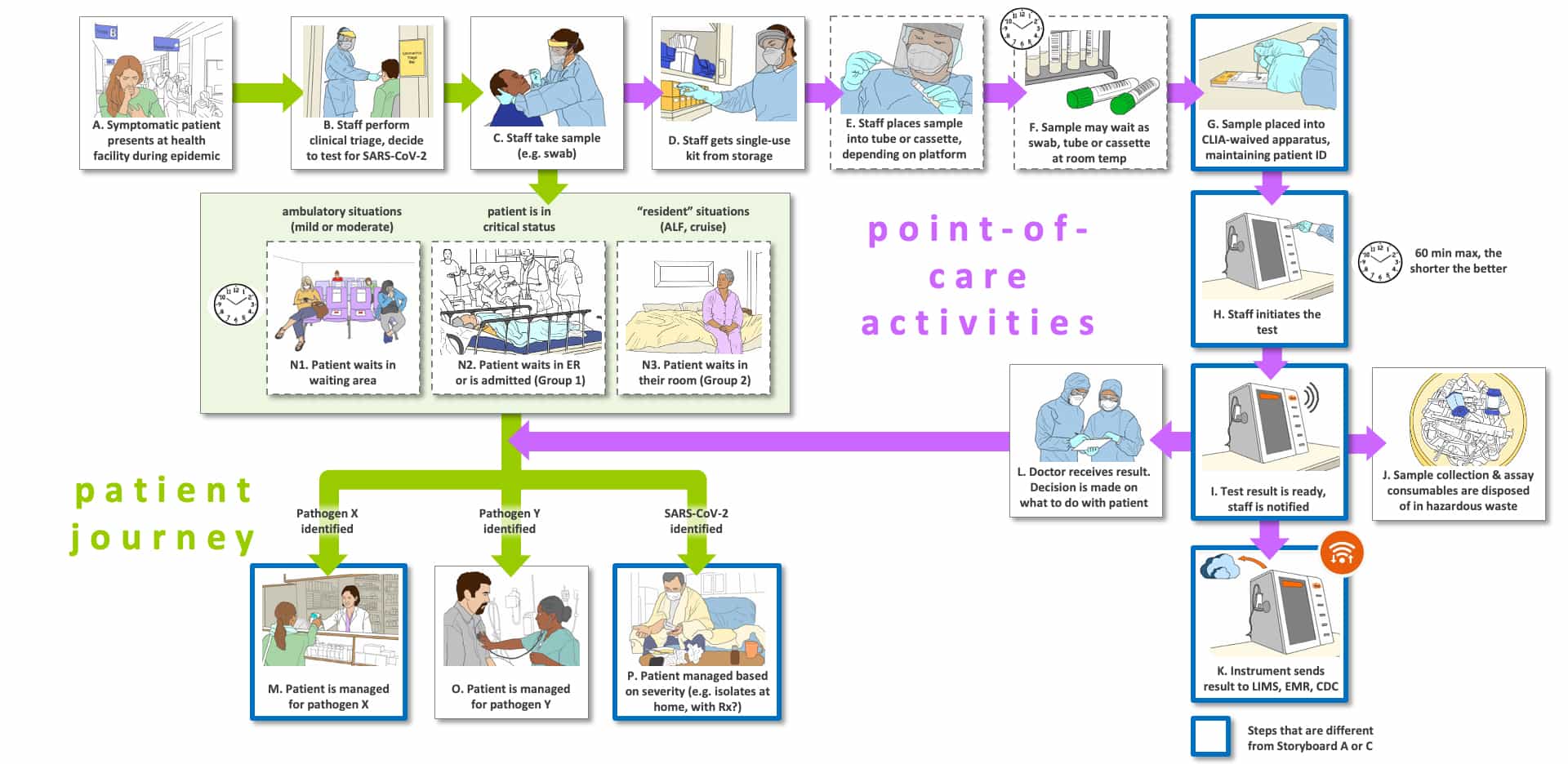Like Use Case 5, we have envisioned two Use Settings (Storyboards) for our Use Case 6: one for the point-of-care diagnostic setting (on-site testing; Storyboard E) and one for the send-out (Storyboard F). Again, we have depicted the point-of-care setting in an epidemic setting, while we use an endemic setting for Storyboard F.
Note that Storyboard E is very much like Storyboard C. The new wrinkle is that the diagnosis is not just for a SARS-CoV-2 infection, but also for the diagnosis of other respiratory pathogens such as influenza A/B, RSV and the cold-associated coronaviruses HCoV 229E, NL63, OC43 and HKU. In addition, pathogens involved in non-respiratory febrile diseases could be pertinent. Products for differential diagnosis have already appeared in the market, and others have been announced for introduction in fall 2020. The change in steps between this Storyboard and Storyboard C are just M1 and M2. Now as opposed to a non-diagnosis in Panel M of Storyboard C, there are specific diagnoses and clinical paths in new Panels M1 and M2. There are no other changes from Storyboard C.
Most RNA testing for SARS-CoV-2 is negative. This begs the question: what is the source of the flu-like symptoms in these persons? An answer could provide some comfort, release the need for PPE by HCW and potentially provide treatment options (e.g., oseltamivir in early flu). Performance of the SARS-CoV-2 test can’t be diminished in order to add the tests for other pathogens to be tested and each of those other tests must perform at a high level. We believe that if the performance and price are acceptable, differential diagnostics tests will be well received. Multiplex PCR and NGS solutions are available or in development.
The Storyboards are meant to be approximate descriptions of the overall testing ecosystem. They are organized as flow charts containing sites of activity, people involved (e.g., patients, medical practitioners and laboratorians) and pathways for tested individuals, healthcare professionals (or other testers in some cases), sample collection and transport, testing, result generation and information flow. They also show key decisions informed by the test results.
Steps in this Storyboard that are different from Storyboards A and C are shown with a thick blue outline
There are three types of “journeys” in the Storyboards: 1) the tested individual’s (usually patient) journey which are shown using green arrows, 2) point-of-care or point-of-use activities which are shown with purple arrows (e.g., sample collection, sometimes testing) and 3) the sample and data journey through a laboratory, which is shown with blue arrows.
The letters that label each step are not meant to indicate an order for the steps, they are simply there to facilitate discussion about the storyboard. Optional steps have a dashed outline, and examples of possible variations in a step are labeled with the same letter followed by differentiating numbers e.g., B1, B2 and B3)
There are a number of clocks and calendars pictured near specific steps to indicate time-consuming steps and those that could vary in total time depending upon the workflow efficiency of the healthcare site and the characteristics of the testing platform (e.g., batch analysis, time to results).

